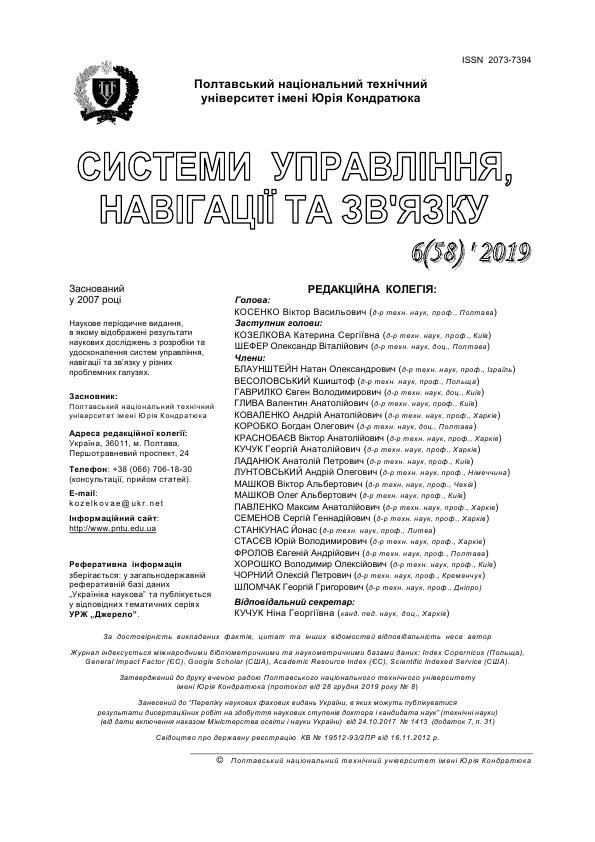ДОСЛІДЖЕННЯ МАТРИЧНИХ ФАКТОРИЗАЦІЙНИХ МОДЕЛЕЙ РЕКОМЕНДАЦІЙНИХ СИСТЕМ
DOI:
https://doi.org/10.26906/SUNZ.2019.6.058Ключові слова:
рекомендаційні системи, матрична факторизація, SVD, приховані фактори, градієнтний спуск, прогнозуванняАнотація
Об’єктом дослідження є процес створення списків рекомендацій відвідувачам веб-сайтів. Метою даної роботи є дослідження існуючих матричних факторизаційних моделей рекомендаційних систем. У рекомендаційних системах факторизація застосовується до матриці рейтингів з метою виявляння прихованих факторів, властивих об’єктам системи, що впливають на вподобання користувачів. Матричні факторизаційні моделі рекомендаційних систем досить популярні серед розробників та мають багато модифікацій. У даній роботі розглянуто наступні моделі: FunkSVD, SVD++, Asymmetric SVD та timeSVD. Факторизаційні моделі рекомендаційних систем використовуються у методах колаборативної фільтрації на рівні з моделями на основі сусідства. На відміну від моделей на основі сусідства, які використовують коефіцієнти подоби для створення списків рекомендацій, дані моделі використовують не подобу, а приховані фактори. Перевагами таких моделей є підвищена, порівняно з іншими моделями, робастність до атак ін’єкцією профілів та висока точність прогнозування вподобань користувачів. До недоліків досліджуваних моделей слід віднести погану масштабованість, довгий час навчання, а також необхідність повного перенавчання системи при появі нових даних, що частково вирішено лише у асиметричному SVD. Проведене дослідження показало, що існуючі моделі матричної факторизації дають можливість використовувати як явні зворотні зв’язки від користувачів (рейтинги об’єктів, виставлені користувачами), так і неявні зворотні зв’язки (перегляди об’єктів, написані коментарі, тощо), що дозволяє підвищувати точність роботи рекомендаційної системи на веб-ресурсах, де користувачі залишають багато неявного зворотного зв’язку. Такий принцип вперше був реалізований у SVD++. Факторизаційні моделі дозволяють також враховувати неперіодичні та періодичні зміни вподобань користувачів у часі, що, зокрема, реалізовано у timeSVDЗавантаження
Посилання
“Recommender Systems Handbook” (2010) Editors Francesco Ricci, Lior Rokach, Bracha Shapira, Paul B. Kantor, 1st edition, New York, NY, USA: Springer-Verlag New York, Inc., 842 p., doi: https://doi.org/10.1007/978-0-387-85820-3
Jones, M. (2013) “Recommender systems, Part 1. Introduction to approaches and algorithms. Learn about the concepts that underlie web recommendation engines”, URL: https://www.ibm.com/developerworks/opensource/library/os-recommender1/index.html?s_tact=105agx99&s_cmp=cp
Meleshko, Е.V., Semenov, S.G., Khokh, V.D. (2018) “Research of methods of building advisory systems on the internet”, Academic Journal "Control, Navigation and Communication Systems", Issue 1(47), Poltava National Technical Yuri Kondratyuk University, Poltava, pp. 131–136, doi: https://doi.org/10.26906/SUNZ.2018.1.131 (in Ukrainian)
Krupnik, I. (1992) “Decomposition of a monic matrix polynomial into a product of linear factors”, Linear Algebra Appl, P. 239-242.
Funk, S. (2006) “Netflix Update: Try This at Home”, URL: https://sifter.org/~simon/journal/20061211.html
Cao, J., Hu, H., Luo, T., Wang, J., Huang, M., Wang, K., Wu, Zhonghai, Zhang, X. (2015). “Distributed Design and Implementation of SVD++ Algorithm for E-commerce Personalized Recommender System”, Communications in Computer and Information Science. 572. Springer Singapore. pp. 30-44. doi: https://doi.org/10.1007/978-981-10-0421-6_4
Jia, Ya. (2014) “Users' brands preference based on SVD++ in recommender systems”, IEEE Workshop on Advanced Research and Technology in Industry Applications. pp. 1175-1178. doi: https://doi.org/10.1109/wartia.2014.6976489
Koren, Y. (2008) “Factorization meets the neighborhood”, Proceeding of the 14th ACM SIGKDD international conference on Knowledge discovery and data mining, doi: https://doi.org/10.1145/1401890.1401944
Töscher, A., Jahrer, M., Bell, R.M. (2009) “The BigChaos Solution to the Netflix Grand Prize”, Netflix prize documentation, URL: https://www.netflixprize.com/assets/ GrandPrize2009_BPC_BigChaos.pdf
Koren, Ye. (2009) “Collaborative filtering with temporal dynamics”, Proceeding KDD '09 Proceedings of the 15th ACM SIGKDD international conference on Knowledge discovery and data mining, P. 447-456.
“Overfitting in machine learning: what it is and how to prevent it”, (2017) URL: https://elitedatascience.com/overfitting-in-machine-learning
Brownlee, J. (2016) “Overfitting and underfitting with machine learning algorithms”, URL: https://machinelearningmastery.com/overfitting-and-underfitting-with-machine-learning-algorithms
Neumaier, A. (1998) “Solving ill-conditioned and singular linear systems: A tutorial on regularization”, SIAM Review 40, P. 636–666.




